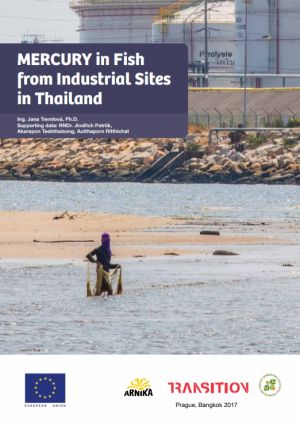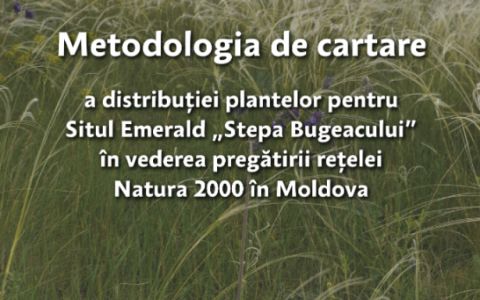Report based on chemical analyses of fish and sediment samples collected by Arnika and EARTH in Thailand in 2016 - 2017
Bangkok / Prague
Pages: 54
Language: English
Author: Jana Tremlova
Supporting data: Jindřich Petrlik, Akarapon Teebthaisong, Autthaporn Ritthichat
DOI: 10.13140/RG.2.2.25331.43041
The main objective of this study is the evaluation of contamination in different parts of Thailand by mercury and other elements (As, Zn, Cd, Sr, Ba, Cu, Co, Ni, Cr, Pb, Mo). These elements were determined in a set of fish and sediment samples taken during February/March 2016 and February 2017. In collected samples only mercury and arsenic were found at significant levels. Although arsenic in sediments exceeded legal standards quite often, its contain in fish was elevated only in few samples. Also the occurrence of arsenic in water and especially marine organisms is not that crucial because most of the inorganic arsenic from the environment is transformed by the organisms into much less harmful organic compounds like arsenobetaine and arsenocholine that are often considered harmless. On the contrary, a main product of mercury methylation by organisms is highly toxic methylmercury. Another problem is high background concentrations of mercury in samples originating from unpolluted areas which can be caused by a long distance transport of mercury and its bioaccumulation and biomagnification further away from the original source of contamination. When it is counted with Thai average daily fish consumption per person of 0.061 kg and an average body weight of 60 kg then the amount of methylmercury in almost all fish samples were above the US EPA oral Reference Dose for methylmercury, which is set as 0.0001 mg methylmercury per kg body weight-day (see Table 8 *,C). The most contaminated samples originated from Tha Tum and Map Ta Phut areas. The situation is all the more serious when we take into consideration that such contaminated fish are sometimes eaten up to 2 – 3 times a day, and are eaten even by children, pregnant women and are intended for the local market. Using of mercury in the industry and subsequent mercury contamination causes health, ecological, economical and ethical burdens and should be further regulated on a national and international level.
Acknowledgement
The field survey, sampling and analysis were conducted as a part of the project ‘‘Increasing Transparency in Industrial Pollution Management through Citizen Science” funded by European Union and co-financed by Czech Ministry of Foreign Affairs, IPEN, and Global Greengrants Fund.







